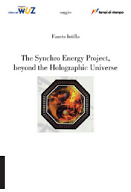
Source:
Science Daily — Brad Jones, a professor of chemistry at Wake Forest University, is leading a team of researchers at four institutions to develop the first handheld, field instrument capable of detecting and identifying radioactive particles at the site of potential contamination.
The device will enable authorities to quickly test dust, soil, water and crops in the event of a terrorist attack such as a “dirty” bomb.
The three-year project is funded by the National Science Foundation in conjunction with the Department of Homeland Security, which asked scientists to submit proposals for radioactivity detection devices. Jones, who specializes in creating spectroscopic instruments, saw the potential to adapt a design he originally conceived years ago to permit rapid field testing for lead in blood samples.
Jones’ “Tungsten Coil Atomic Emission Spectrometer” is constructed using the metal coil filament from a standard slide projector bulb powered by a 12-volt battery, such as the type used to start boats or automobiles. Environmental samples of suspect particles are dissolved in liquid, and droplets are placed on the coil.
The samples are dried at low voltage and the residue vaporized at 3,000 degrees, producing a flash of light. Each metal displays a unique color signature, which is captured by a fiber optic sensor connected to a laptop computer. Test results are then charted on a graph showing each sample’s wavelength and intensity, allowing scientists to identify specific elements and amounts of radioactivity.
“It’s just a natural application,” Jones says, noting that the radioisotopes likely to be stolen from medical or industrial facilities and used by terrorists are also the most brightly emitting elements in atomic spectrometry. “But, the proposed device represents a new way of thinking in the field of nuclear forensics. Atomic emission spectrometry is traditionally a laboratory-based technique using very large, very expensive instruments. With immediate on-site results, residents could be given timely information about a potential threat or reassured that none existed rather than waiting for samples to be transported to laboratories for analysis.”
Portability may also lead to new applications of atomic spectrometry in the field, Jones adds, such as testing for contamination by pesticides and other pollutants.
Instrument manufacturer Teledyne Leeman Labs is interested in the production and marketing of the device once Jones’ research group perfects their prototype. Jones has collaborated with the company for more than a decade.
Other members of the research team include Clifton P. Calloway Jr., associate professor of chemistry at Winthrop University in Rock Hill, S.C.; Arthur L. Salido, assistant professor of chemistry at Western Carolina University in Cullowhee; and Joaquim A. Nobrega, professor of chemistry at the Federal University of Sao Carlos in Brazil.
Note: This story has been adapted from a news release issued by Wake Forest University.
The three-year project is funded by the National Science Foundation in conjunction with the Department of Homeland Security, which asked scientists to submit proposals for radioactivity detection devices. Jones, who specializes in creating spectroscopic instruments, saw the potential to adapt a design he originally conceived years ago to permit rapid field testing for lead in blood samples.
Jones’ “Tungsten Coil Atomic Emission Spectrometer” is constructed using the metal coil filament from a standard slide projector bulb powered by a 12-volt battery, such as the type used to start boats or automobiles. Environmental samples of suspect particles are dissolved in liquid, and droplets are placed on the coil.
The samples are dried at low voltage and the residue vaporized at 3,000 degrees, producing a flash of light. Each metal displays a unique color signature, which is captured by a fiber optic sensor connected to a laptop computer. Test results are then charted on a graph showing each sample’s wavelength and intensity, allowing scientists to identify specific elements and amounts of radioactivity.
“It’s just a natural application,” Jones says, noting that the radioisotopes likely to be stolen from medical or industrial facilities and used by terrorists are also the most brightly emitting elements in atomic spectrometry. “But, the proposed device represents a new way of thinking in the field of nuclear forensics. Atomic emission spectrometry is traditionally a laboratory-based technique using very large, very expensive instruments. With immediate on-site results, residents could be given timely information about a potential threat or reassured that none existed rather than waiting for samples to be transported to laboratories for analysis.”
Portability may also lead to new applications of atomic spectrometry in the field, Jones adds, such as testing for contamination by pesticides and other pollutants.
Instrument manufacturer Teledyne Leeman Labs is interested in the production and marketing of the device once Jones’ research group perfects their prototype. Jones has collaborated with the company for more than a decade.
Other members of the research team include Clifton P. Calloway Jr., associate professor of chemistry at Winthrop University in Rock Hill, S.C.; Arthur L. Salido, assistant professor of chemistry at Western Carolina University in Cullowhee; and Joaquim A. Nobrega, professor of chemistry at the Federal University of Sao Carlos in Brazil.
Note: This story has been adapted from a news release issued by Wake Forest University.
Fausto Intilla















Nessun commento:
Posta un commento